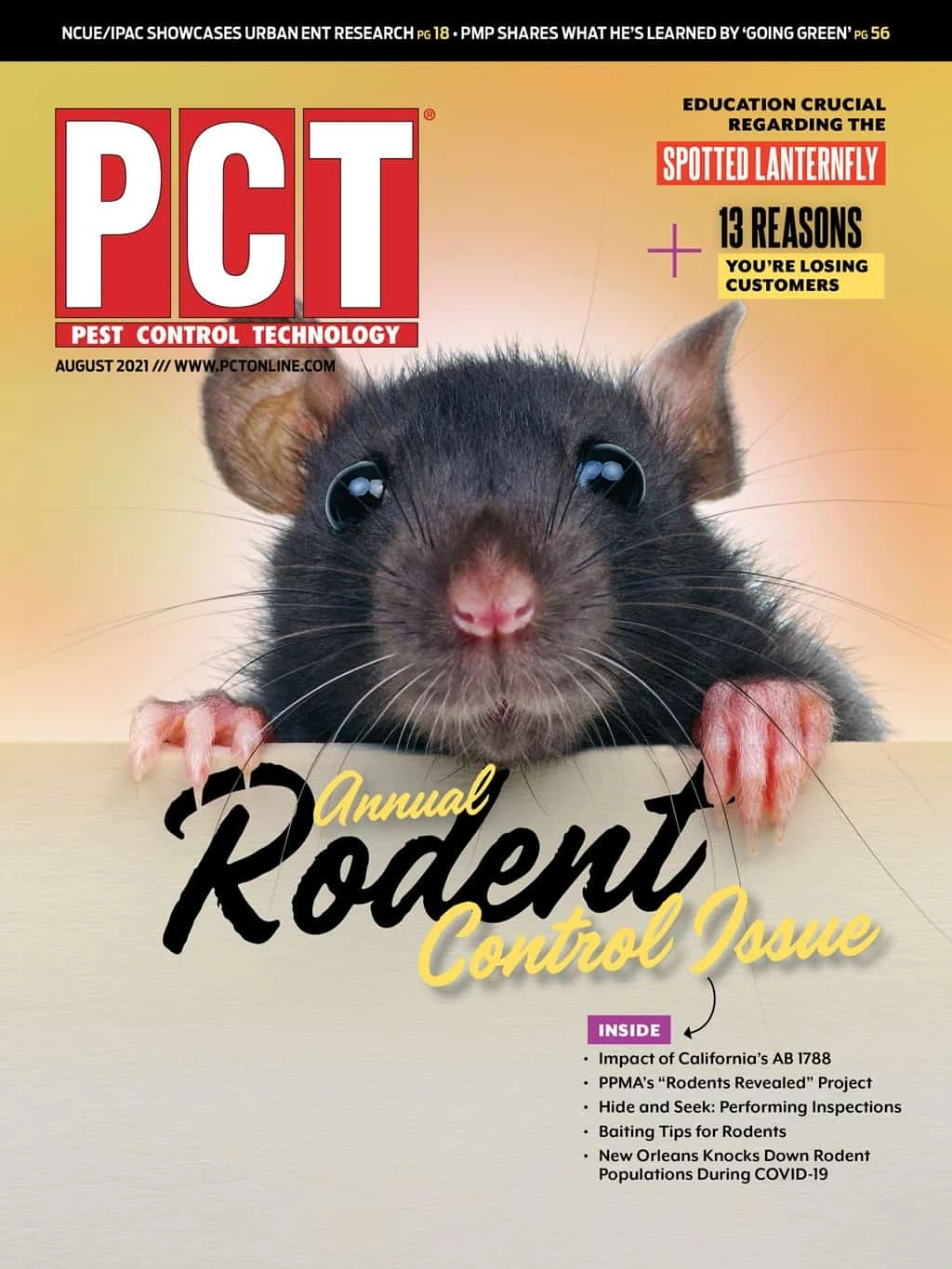By Jacqueline Mitchell
Students, researchers and industry professionals tuned in via Zoom to honor award recipients and discuss research and career topics at the virtual National Conference on Urban Entomology and Invasive & Pest Ant Conference (NCUE/IPAC) May 24-25. The event, held biennially since 1986, was rescheduled from its original 2020 date due to the COVID-19 pandemic.
During the first day of the conference, 11 undergraduate and graduate students gave 10-minute presentations on various aspects of urban entomology and invasive ant management as part of NCUE/IPAC’s student paper competition.
Maria A. Gonzalez-Morales, a Ph.D. candidate at North Carolina State University, took home first place and $1,000 for her paper “Resistance to Fipronil in the Common Bed Bug, Cimex lectularius L. (Hemiptera: Cimicidae).” Her research aims to understand bed bug and cockroach resistance to insecticides to improve urban pest management.

Other presenters included Cari Lewis, a Ph.D. candidate at the University of Tulsa, who shared her paper “Decade-Long Upsurge in Target Site Insecticide Resistance in Bed Bug Populations in the United States.”
Lewis studied the long-term effects of insecticide use on urban insect pests by sampling 233 bed bugs from across the country for knockdown resistance mutations from 2018-19. She compared this data with research completed by entomologists in 2009.
“I aimed to determine if there is a long-term effect of insecticide use on the genetics present from bed bugs presently to 10 years ago,” she explained.
Her findings supported her prediction that through the long-term use of insecticides, urban bed bugs have evolved to possess knockdown resistance mutations. Lewis took second place in the student paper competition and received $750.
Richard Murphy, Ph.D. candidate at Auburn University, presented “Video Analysis of a Termite Colony, Reticulitermes flavipes, Throughout Exposure to Trelona Termiticide Bait.” His accompanying video footage showed the gradual demise of a termite colony as it was exposed to bait.
“We successfully documented behaviors which are important to our understanding of termite bait interaction,” said Murphy. “We documented behaviors of successful efficacy in terms of total colony collapse.”
Allison Johnson, a Ph.D. candidate at the University of Georgia, shared research on how well participants of different skill sets — from certified entomologists to junior high students — were able to recognize different species of termites based on mandible size in her presentation “Old Tactics, New Tools: A Survey of Reticulitermes in Georgia.”
Johnson’s research concluded that while experienced entomologists provided the most reliable species identification, with minimal training, other groups, including graduate, undergraduate and junior high students, also were able to make accurate identifications.
“With limited training, a small group of participants can quickly learn to recognize these characters in a survey of this style and get pretty close to an experienced entomologist with a high degree of confidence in those category placements,” said Johnson, who was awarded third place and received $500 for her presentation.
Undergraduate Marlo Black of the University of Tennessee and doctoral candidate Mark Janowiecki of Texas A&M University each received $1,500 scholarships during the conference. Scholarships were open to graduate and undergraduate students studying urban entomology or industrial pest management full-time at an accredited United States college or university.
Typically, a scholarship is also awarded to a student at the master’s level, but NCUE/IPAC did not receive applicants in this category.
On day two of NCUE/IPAC, Distinguished Achievement Award winner Dr. Ed Vargo, professor and endowed chair at Texas A&M University, was recognized for his contributions to the field of urban entomology — particularly the biology and management of termites and bed bugs — and gave the Arnold Mallis Memorial Award lecture, “Urban Entomology Through the Eyes of a Molecular Ecologist.” He discussed his research on genetic identification of subterranean termite colonies and colony breeding structures in invasive ants and subterranean termites.
“Urban entomology and molecular ecology — these aren’t two terms that you often hear together,” Vargo said. “I think it’s probably a shame that we don’t often hear these two terms together, because these are two disciplines that I think have a lot to offer each other. Molecular ecology is a really big, growing area that’s taken over a lot of biology and has the potential to really provide incredible insights into the biology of organisms. And of course, urban entomology offers us many really amazing insects and other pests for study.”
Vargo’s work has focused on the colony breeding systems of social insects and the genetic fingerprinting of colonies. He began his career researching ant reproductive biology at the University of Georgia. He then spent two years in Toulouse, France, studying the physiology and behavior of Argentine ants. Later, at the University of Texas at Austin, he worked with the Texas Department of Agriculture, where he said he gained an appreciation for the impact that fire ants have on the public. He has published more than 130 scientific articles on urban pests.
Next year’s NCUE/IPAC conference is scheduled for May 15-18 at the Sheraton Salt Lake City Hotel in Salt Lake City, Utah.
 | The Garden Center Conference & Expo, presented by Garden Center magazine, is the leading event where garden retailers come together to learn from each other, get inspired and move the industry forward. Be sure to register by April 17 to get the lowest rates for the 2025 show in Kansas City, Missouri, Aug. 5-7.
|

Explore the August 2021 Issue
Check out more from this issue and find your next story to read.
Latest from Pest Control Technology
- Termatrac Introduces iTraker Pro
- All-American Pest Control Celebrates Employees at Annual Awards Ceremony
- NEPMA PestVets Unit Collects Food and Clothing Items for Veterans
- When Can a Site Be Declared 'Bed Bug-Free?'
- PestWorld East 2025 Program Announced
- Hygiene IQ Uses Smart Sensor Technology to Detect Rodents
- Rollins Acquires Saela Pest Control
- PCT Spotlights Leaders in Pest Management for Women’s History Month






